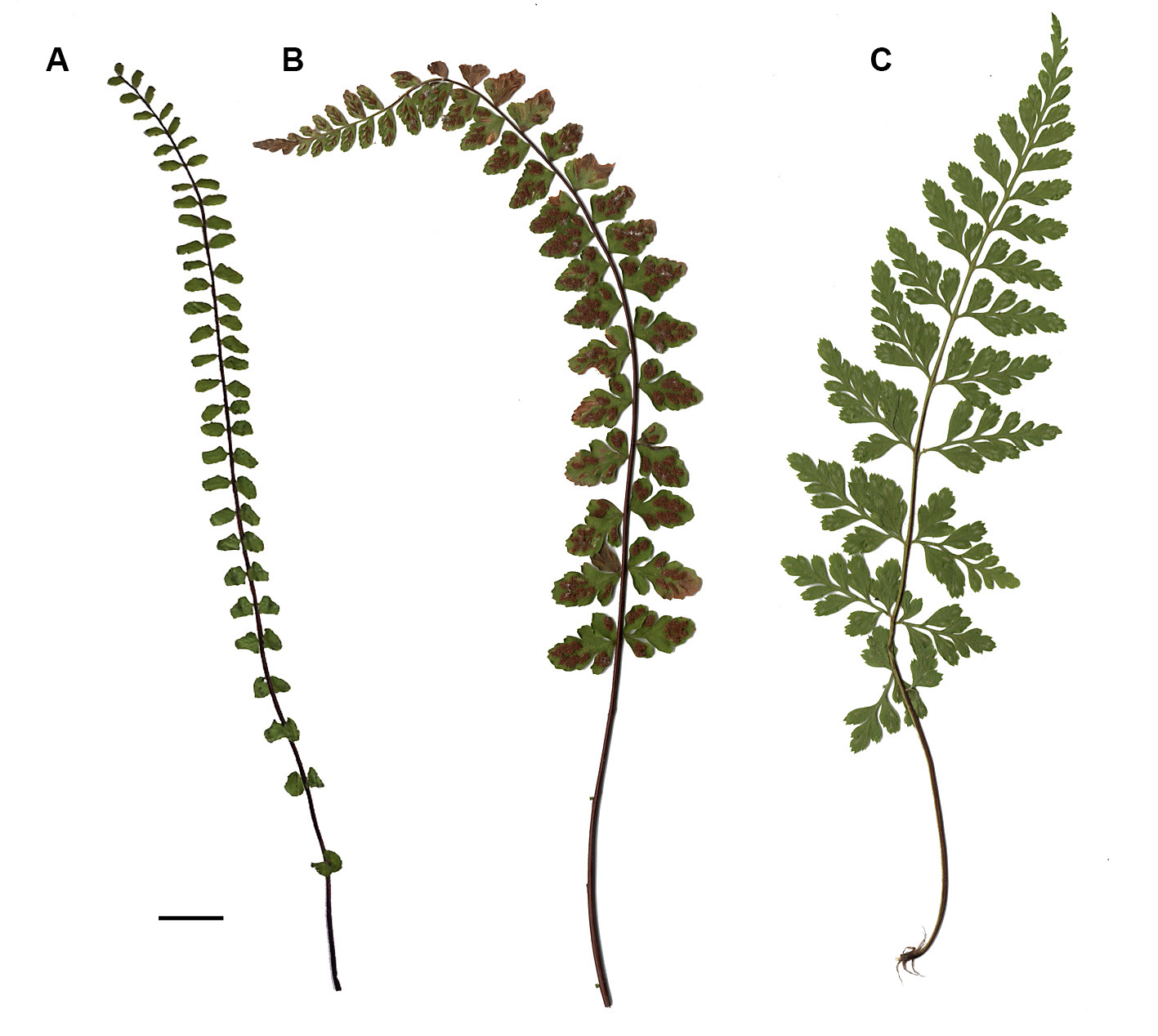de la Fuente Brun, P; Gabriel y Galán, JM; Molino, S; Sessa, E & Quintanilla, L
Character expression, reproductive barriers, and origin of the rare fern hybrid Asplenium × aran-tohanum (Aspleniaceae)
Plant Systematics and Evolution 306(2): 24 2020
DOI: 10.1007/s00606-020-01658-8
RESUMEN
Hybridization is a ubiquitous force in plant evolution. In ferns, hybrids are often easily recognized by their intermediate morphology and abortive spores and thus provide a good model for studying reproductive isolating barriers between species. Asplenium x aran-tohanum is a rare fern hybrid, despite wide coexistence of its parental species (A. billotii and A. trichomanes subsp. quadrivalens) in Western Europe. We made a complete characterization of its three known individuals, including macro- and micromorphology, sporogenesis, gametophyte reproduction, and chloroplast DNA inheritance and evolution. The hybrid expressed morphological characters that were mostly intermediate between those of the parents, but some characters were more similar to one parent or the other. Sizes of both guard cells and spores indicate that the hybrid is tetraploid, as are both parents, and one parent (A. billotii) consistently acted as the female. A very small fraction of spores (~ 7%) were viable and the resulting gametophytes could not form sporophytes, either sexually or apogamously, suggesting that effective postzygotic barriers exist between the parents. The lineages of these taxa diverged about 35 million years ago, which may explain the strong reproductive isolation and rarity of the hybrid. Asplenium x aran-tohanum appears to be an evolutionary dead end, probably formed recurrently at the places where it grows, but incapable of completing its life cycle or producing viable offspring.
